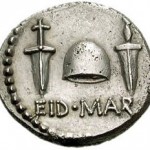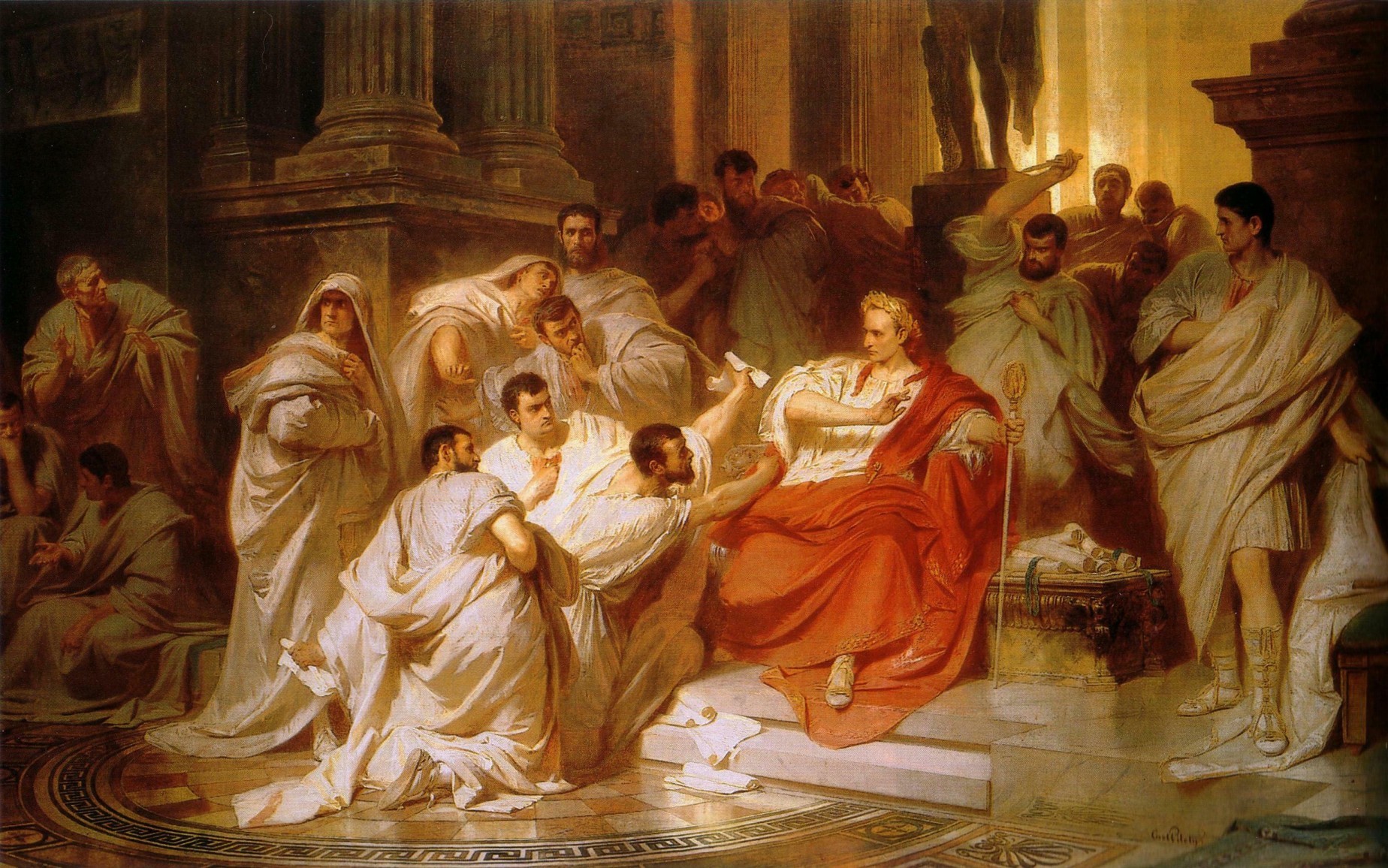Beware the ides of March!
Remember the soothsayer speaking those words in The Tragedy of Julius Caesar? They must have resonated with audiences when Shakespeare’s play debuted in 1599.
The Ides March on: Calender Issues

People were keenly aware of the differences between the Julian calendar — a revision of Caesar’s Roman calendar — and the Gregorian calendar kept in Catholic countries on the continent.
Because the two calendars featured years of slightly different lengths, they had become several days apart by the late 16th century.
Romans originally thought of March 15 as the deadline for paying back debts. After Caesar’s murder, the Ides of March gained special significance. Ominous undertones remain even today, centuries after the political event with which the date is associated.
An Artist Takes a Stab at a Historic Moment
Which brings us to today’s artwork, The Death of Caesar (1865) by the German artist Karl Theodor von Piloty! Piloty was a rock star of the art world in his heyday – a phenomenon described as ‘Piloty mania’ by Theodor Fontane, the godfather of German Realism, in his 1880 novel “L’Adultera.”

Look closely at the painting. Of the 21 figures in the composition, every last one knows what is about to happen – i.e. that Brutus is going to sink his ice-cold dagger into Caesar’s back.
Everyone, that is, but Caesar.













